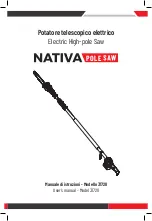Reviews:
No comments
Related manuals for LT40DC Series

LS1216
Brand: Makita Pages: 35

LS1013
Brand: Makita Pages: 6

31720
Brand: nativa Pages: 36

PM-1886
Brand: Rockwell Pages: 8

PDKS 6.3 A1
Brand: Parkside Pages: 74

BT-LC 700/1 D
Brand: EINHELL Pages: 92

SSM1005
Brand: Ferm Pages: 84

MTF 216/1100T
Brand: Felisatti Pages: 8

HS100S
Brand: Scheppach Pages: 164

T-HKS 1500
Brand: TOOLCRAFT Pages: 80

61973
Brand: Chicago Electric Pages: 20

TST16 355
Brand: Taurus Pages: 17

CS 350
Brand: SPE Pages: 3

ITALY 100
Brand: SIRI Pages: 36

KCT 205 H
Brand: KING CRAFT Pages: 44

HYPS36LI
Brand: Hyundai Pages: 28

KC-3003N
Brand: King Canada Pages: 3

9050
Brand: Dremel Pages: 44

















